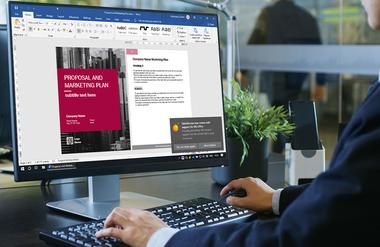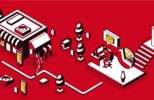“Urgent!”

How do you make sure your staff know about important changes to content, business processes or guidelines that you (really) want them to take into account?
Do you send out an email? Better still, an email marked as urgent? Or do you get the whole team together and arrange a workshop, just to be on the safe side? Have you thought of using the news channel on your intranet? Surely pretty much everyone checks that at the start of their working day. Don’t they?
Said is not heard – and certainly not done
That is the whole point. Every change manager, compliance officer and project manager knows that communication is crucial to the success of any change activity. The second key to success, which is at least as important, is forming habits. After all, it’s only when doing the right or intended thing at the right time has become second nature for everyone that you really succeed in turning visions, guidelines and good intentions into a living, breathing corporate culture and are able to roll out permanent changes to working processes with absolute process certainty.
A quote from behaviorist and Nobel Prize winner Konrad Lorenz explains why many companies fail time and again in this task: “Said is not heard, heard is not understood, understood is not agreed, agreed is not applied, applied is not maintained.” Let that thought sink in for a few seconds and it suddenly turns into a huge chasm running between all change aspirations and targets – one into which all good intentions could well disappear. So what is the solution?
Dropping a huge and heavy context-sensitive hint
The benefits of this context-based 1:1 communication become clear as soon as you compare it with other communication tools – all of which still have their uses, of course. After all, there is no doubt that emails, team chats, meetings, workshops and all the other classic in-house communication channels are essential tools for disseminating information.
However, each of them has limits. There could be too many irrelevant emails doing the rounds, meaning the ones that really matter are only given a cursory glance, seen too late, or never even read. The pressure to change could be so intense and made up of so many intricate details that a meeting or workshop would have to be held virtually every hour. To give another example, well-intentioned boiler plates such as “Think before you print” might not even be noticed by the reader, and can often be counterproductive. That is to say, emails are still frequently printed out regardless and often with one more page than is necessary. And what is on this extra page? You’ve guessed it – “Think before you print!”
Compared to that, a push notification is like dropping a huge and heavy hint. A reminder to consider whether printing is necessary, for example, appears as soon as the print dialog is opened, at the very moment users decide to commit a document to paper – be it out of carelessness, habit or for good reason – but before they click OK to confirm. Ideally, anyone who wants to learn more about their carbon footprint will also be able to consult QuickAccess for context-relevant hyperlinks to further information, online help and learning content about digitalized business processes in the company.





